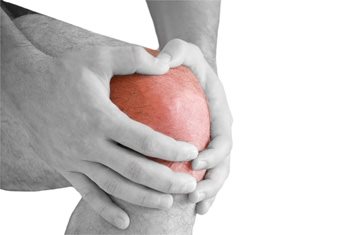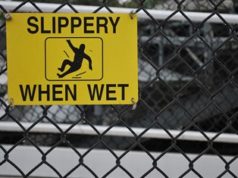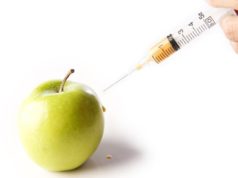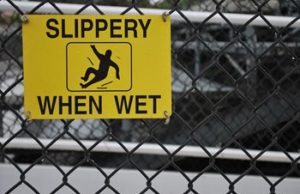
Introduction
Knee injuries are common, affecting people of all ages and activities. Knee injuries can occur due to sports or physical activities, as well as from daily wear and tear. In this article, we will provide you with an overview of knee injuries, their causes, symptoms, diagnosis, and treatment.
Common Causes of Knee Injuries
Knee injuries can occur due to various activities such as sports, recreational activities, high-impact fitness activities, and even daily activities like walking on an uneven surface. Some of the most common causes of knee injuries include:
– Falling or twisting of the knee
– Direct blow or hit to the knee
– Overuse or repetitive use of the knee such as running, jumping, or cycling
– Arthritis, osteoporosis, or other chronic conditions affecting the knee
– Age-related wear and tear
Symptoms of Knee Injuries
Knee injuries can cause a range of symptoms that can vary depending upon the severity of the injury. Some common symptoms of knee injuries include:
– Pain, swelling, and stiffness
– Difficulty moving or bending the knee
– A popping or clicking sound when moving the knee
– Feeling of instability or weakness
– Numbness or tingling in the knee or lower leg
– Redness or warmth around the knee joint
Diagnosis of Knee Injuries
To diagnose a knee injury, a physician will evaluate the patient’s medical history and examine the knee physically. Diagnostic tests such as X-rays, MRIs, or ultrasound may be necessary to further evaluate the injury and determine the exact cause of the knee problem.
Treatment for Knee Injuries
The treatment option for knee injuries depends on the severity of the injury and the specific type of injury. For minor injuries, rest, ice, compression, and elevation (RICE) and over-the-counter pain medications can help reduce the symptoms.
For more severe injuries, a medical professional may recommend more specialized treatment options such as physical therapy, steroid injections, arthroscopic surgery, or, in the most severe cases, joint replacement surgery.
Prevention of Knee Injuries
To avoid future knee injuries, one can do several things such as:
– Wear protective knee pads and braces during high-impact activities such as skating, skateboarding, or basketball
– Maintain good physical conditioning through regular exercise and stretching
– Using proper athletic techniques during physical activities
– Wearing supportive shoes with good cushioning
Conclusion
Knee injuries can be painful and limit someone’s daily activities. Therefore, it is essential to take preventative measures to reduce the risk of knee injuries. If someone does suffer a knee injury, prompt medical attention and treatment can help alleviate symptoms, avoid further damage, and promote healing. Regular exercise, such as low-impact activities, can help maintain knee flexibility and strength, reducing the likelihood of knee injury.
Definition of Knee Injuries
Knee injuries can occur either directly or in such less direct forms of stretching or twisting. The latter category for knee injuries involves the cartilage (meniscus) being pinched between the femoral condyle’s edges and the surface of the tibia, and may thus cause the knee to tear.
The former category for knee injuries can also occur when the ligament in the knee becomes stretched, and includes three possible grades in terms of the severity with which knee injuries can occur, with the first grade being the least serious and the third grade being the most. In the event of third grade stretching knee injuries, the ligament will become completely torn.
Knee injuries could also be considered to involve damage to the muscles and tendons which surround and support the knee, as might come in such specific forms as include hyperextension and hyperflexion, in either case in an acute form.
These kinds of knee injuries are also referred to as strains, and are subject to the same kind of grading system in terms of how their level of severity is identified by administering physicians. As such, third degree knee injuries of this kind can be considered to comprise those in which the muscles and tendons surrounding the knee become completely torn.
Identifying Knee Injuries
Knee injuries may cause varying degrees of pain and difficulty for the individual affected based on the specific cause for the injury, and might appear either immediately after the specific cause for knee injuries has occurred or after a longer period of time. “Non-classical” knee injuries can occur particularly when more than one part of the knee has been injured. When the rate for knee injuries to occur extends up to a period of several hours, then the ill-effects may have been caused by damage to the cartilage in the knee.
Knee injuries which are considered acute come in two main, possibly applicable forms. As such, the distinction between the two kinds of possible knee injuries can be made with reference to the symptoms involved and the speed with which they develop and appear. Acute knee injuries, in this regard, can either involve symptoms which do not greatly impair mobility, do not involve much swelling, and are more likely to involve localized, rather than general, pain, and pain more toward the level of an uncomfortable, rather than fully painful, sensation.
Treatment for Knee Injuries
Knee injuries will generally require more than a single session of consultation with or treatment by a medical professional in order to be fully addressed. Generally, a RICE (Rest-Ice-Compression-Elevation) regimen will be extended to people who have suffered knee injuries.
In addition, PT (physical therapy) and other kinds of exercises aimed at restoring strength to the affected individual will also typically be extended to the affected individual. Surgical operations can be made available, depending on the severity of the knee injuries involved, in order to address the long-term potential for discomfort and debilitation.
























